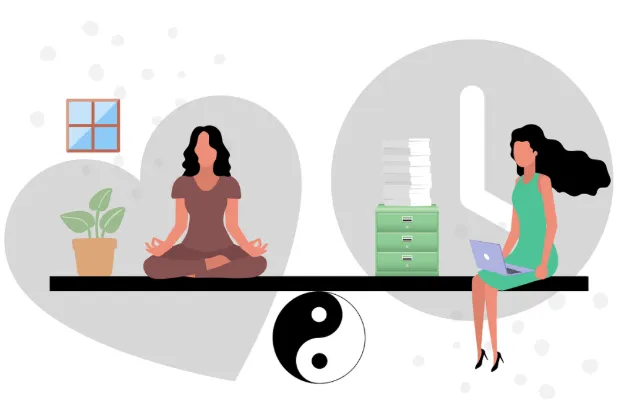Feeling like life is pulling you in every direction? Between work, relationships, and daily responsibilities, finding balance can seem impossible. That’s where mindfulness steps in. Mindfulness practices are designed to help you live in the present, reduce stress, and cultivate a greater sense of well-being.
Whether you’ve tried mindfulness before or are entirely new to it, this guide will introduce you to effective techniques to help you bring balance to your life.
What Is Mindfulness?
Before we explore how to use mindfulness for balance, let’s define it. Mindfulness is the practice of paying attention, on purpose, to the present moment without judgment. It’s about awareness and fully experiencing the ‘now,’ rather than worrying about the past or stressing over the future.
From therapists to even a psychiatrist in Salt Lake City, professionals agree on mindfulness’ mental and emotional benefits, including improved focus, stress reduction, and better emotional regulation.
The Benefits of Living Mindfully
Wondering why you should incorporate mindfulness into your daily life? Here are a few reasons mindfulness can help you restore balance:
- Reduces Stress
Chronic stress can wreak havoc on both your physical health and mental well-being, but mindfulness practices like meditation have been shown to reduce stress by calming your mind and lowering cortisol levels.
- Enhances Emotional Health
Regular mindfulness can decrease negative emotions, such as anxiety or anger, and increase feelings of happiness and contentment.
- Improves Focus
Mindfulness helps to train your brain to concentrate on the task at hand, which enhances productivity and reduces mental clutter.
- Strengthens Relationships
By practicing non-judgmental awareness, mindfulness can nurture empathy, patience, and better communication in personal and professional relationships.
6 Mindfulness Practices to Restore Balance in Life
Now that we understand the benefits, here are six simple practices to incorporate mindfulness into your daily routine.
1. Mindful Breathing
This is one of the easiest ways to practice mindfulness, and you can do it anytime, anywhere.
- How to start: Sit comfortably, close your eyes (optional), and focus on your breathing. Notice the sensation of air entering your nostrils, filling your lungs, and exiting.
- Benefits: This practice can anchor you in the present moment and quickly reduce stress.
2. Morning Meditation
Kickstart your day with mindfulness by spending a few quiet moments meditating before you start your usual routine.
- How to start: Set a timer for five to ten minutes. Sit in a comfortable, distraction-free space, and focus on a calming mantra or your breath.
- Benefits: Morning meditation sets a positive tone for the day ahead, helping you feel calmer and more grounded.
3. Gratitude Journaling
Practicing gratitude is a simple yet powerful way to incorporate mindfulness into your daily life.
- How to start: At the end of each day, jot down three to five things you’re grateful for. Reflect on small moments, like a warm cup of coffee or a kind word from a friend.
- Benefits: Focusing on gratitude can shift your perspective, helping you to notice and appreciate the positive aspects of your life.
4. Mindful Eating
For many, eating is rushed or distracted. Mindful eating involves fully savoring your meals.
- How to start: Pay attention to the colors, textures, and flavors of your food. Chew slowly and enjoy each bite without distractions like scrolling on your phone.
- Benefits: Mindful eating can improve digestion, help regulate portion sizes, and make meals more satisfying.
5. Body Scans
This practice involves focusing attention on different parts of your body to release tension.
- How to start: Lie down or sit comfortably. Close your eyes and focus on each part of your body, starting from your toes and slowly moving upward to your head. Notice any sensations or areas of tension.
- Benefits: Body scans promote relaxation, reduce muscle tension, and enhance your connection with your physical self.
6. Practicing “Mindful Pauses”
Throughout the day, pause for a moment to reflect on how you’re feeling mentally and emotionally.
- How to start: Whenever you find yourself overwhelmed or distracted, take a moment to pause. Check in with yourself by asking, “What am I feeling right now?” and “What do I need at this moment?”
- Benefits: These small moments of reflection can help you stay grounded and prevent stress from building up.
Overcoming Common Challenges in Mindfulness
Starting a mindfulness practice may feel daunting at first. If you feel impatient or have difficulty focusing, you’re not alone. Here are some tips to keep you going:
- Start Small: A few minutes a day is enough to start. Gradually increase the practice time as it becomes easier.
- Be Patient: Mindfulness is a skill that requires practice. Progress may be slow, but consistency is key.
- Seek Support: Consider joining a mindfulness class or consulting experts, such as a psychiatrist in Salt Lake City, to learn new techniques and solidify your practice.
Bringing Mindfulness Into Your Lifestyle
Integrating mindfulness into your routine doesn’t require drastic changes. Instead, look for everyday opportunities to practice it. Whether it’s commute moments, a mindful walk, or even deep breaths before a meeting, every step counts.
Balance is achievable when you emphasize the importance of staying present. Small, consistent efforts can lead to profound differences in your physical, emotional, and mental well-being.
Final Thoughts on Mindfulness and Achieving Balance
Achieving balance in life isn’t about perfection; it’s about finding moments of peace and presence amid the chaos. By practicing mindfulness, you’ll create space for calm, focus, and clarity, unlocking a more balanced and fulfilling life.
If you’re ready to take the first step, choose one or two mindfulness practices from the list and commit to them this week. Your future self will thank you!



